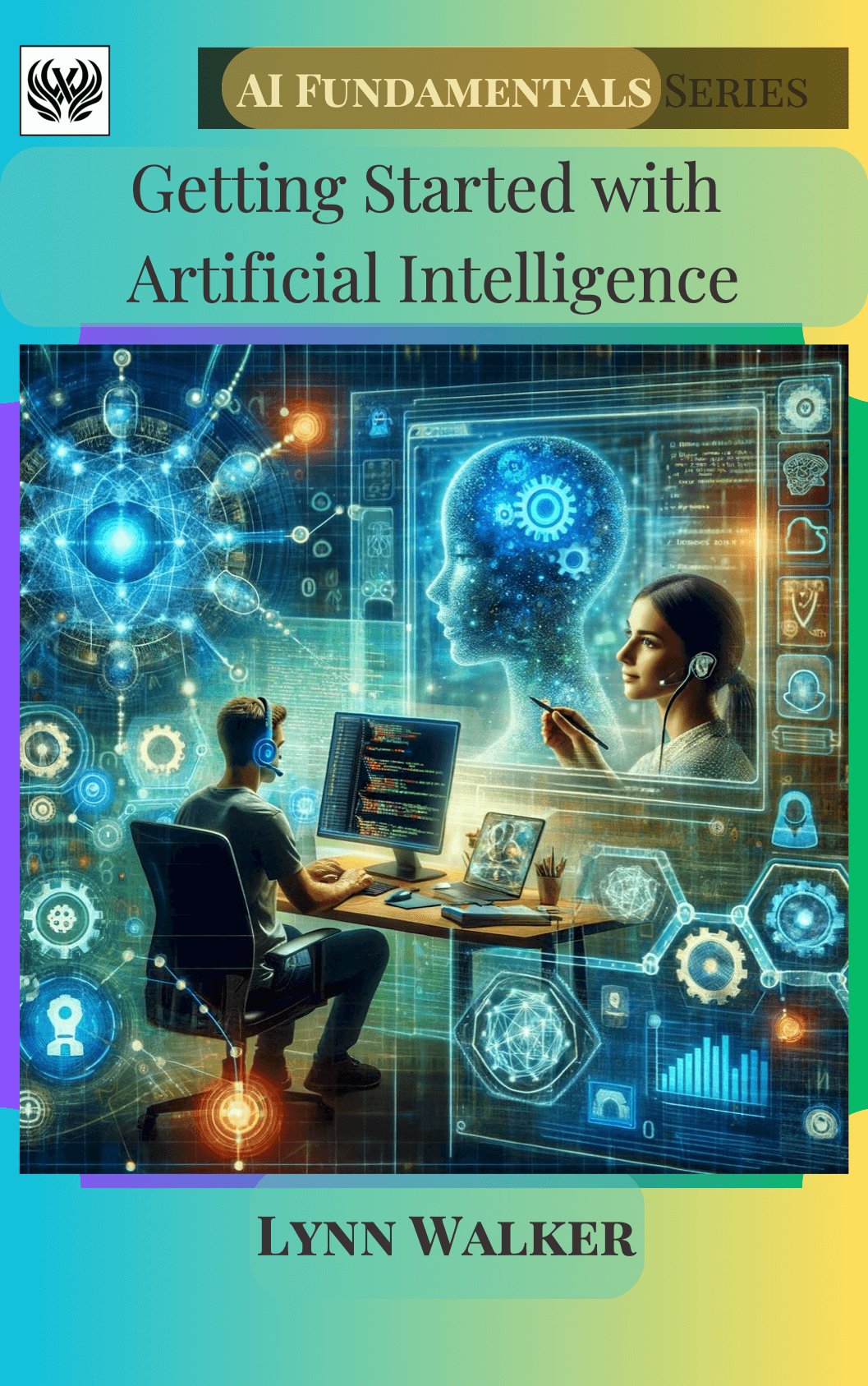AI Fundamentals Series
Discover the AI Fundamentals series, your essential guide to understanding artificial intelligence.
Explore AI basics, core technologies, and practical guides to get started with AI projects.
Perfect for beginners and enthusiasts.
Introduction to Artificial Intelligence
Chapter 1: What is Artificial Intelligence?
- Defining AI and its various subfields
- Weak AI (narrow) vs. strong AI (general)
- AI in relation to human intelligence
- Impact on society
Chapter 2: A Historical Journey Through AI
- Historical context; intro to AI history
- Early developments and milestones
- AI winters and resurgences
- Current state of AI
Chapter 3: Core Techniques Powering AI
- Introduction to AI Techniques
- Role of data in AI
- Machine learning principles
- Deep learning and its applications
- Natural language processing (NLP)
- Computer vision
Chapter 4: Transforming Industries with AI
- AI’s Industry Impact
- AI in healthcare
- AI in finance
- AI in transportation
- AI in communication, entertainment, manufacturing, and agriculture
- AI applications in creativity
- Emerging AI applications
Chapter 5: AI and Society: A Delicate Balance
- Ethical considerations in AI
- AI's impact on jobs and the future of work
- AI's role in shaping our future
Conclusion: The Future of AI
- Responsible AI development
- Visions and speculations for AI's potential
- Potential future breakthroughs; Ethical considerations
- The importance of a human-centered approach
Core Technologies of Artificial Intelligence
Chapter 1: Advanced Machine Learning Techniques
- Ensemble Methods: Techniques combining multiple models to improve accuracy and robustness.
- Feature Engineering: Process of creating and selecting features to enhance model performance.
- Model Optimization: Strategies to improve model accuracy, efficiency, and generalizability.
- Hyperparameter Tuning: Methods for finding the best model parameters for optimal performance.
- Model Evaluation Metrics: Metrics to assess model performance, ensuring reliability and validity.
Chapter 2: Deep Learning Architectures
- Convolutional Neural Networks (CNNs): Deep learning models designed for image and spatial data.
- Recurrent Neural Networks (RNNs): Neural networks suited for sequential data like text and time series.
- Transformers: Advanced models using attention mechanisms for natural language processing tasks.
- Autoencoders: Neural networks for unsupervised learning, primarily used for data compression and noise reduction.
- Generative Adversarial Networks (GANs): Models that generate new data by pitting two networks against each other.
Chapter 3: Natural Language Processing - Beyond the Basics
- Transformer-based Models: Cutting-edge models like BERT and GPT that revolutionize NLP tasks.
- Contextual Embeddings: Techniques to capture word meaning based on context, enhancing understanding.
- Sentiment Analysis Techniques: Methods to analyze and interpret emotions in text data.
- Machine Translation: Techniques to automatically translate text from one language to another.
- Speech Recognition Technologies: Technologies to convert spoken language into text.
Chapter 4: AI in Robotics
- Robotic Process Automation (RPA): Automation of repetitive tasks using AI to improve efficiency.
- Human-Robot Interaction: Enhancing how robots and humans communicate and collaborate.
- Autonomous Vehicles: AI technologies enabling self-driving cars to navigate and make decisions.
- Robotics in Healthcare: AI-driven robots assisting in medical procedures and patient care.
- Industrial Robotics: Use of AI in robots to enhance manufacturing and industrial processes.
Chapter 5: Ethical AI Implementation
- Fairness in AI: Ensuring AI systems do not discriminate and provide equitable outcomes.
- Privacy and Data Security: Protecting user data and ensuring privacy in AI applications.
- Regulatory Compliance: Adhering to laws and regulations governing AI technologies.
- Transparency in AI: Making AI systems understandable and their decisions interpretable.
- AI in Governance: Implementing AI to improve decision-making and transparency in governance.
Chapter 6: Emerging Technologies and Future Trends
- Quantum Computing and AI: Exploring the impact of quantum computing on enhancing AI capabilities.
- AI at the Edge: Deploying AI models on edge devices for real-time processing and reduced latency.
- Neurosynaptic Chips: Hardware designed to mimic the human brain, enhancing AI processing.
- Augmented Reality and AI Integration: Combining AI with AR to create immersive experiences.
- Sustainable AI Technologies: Developing AI solutions that are energy-efficient and environmentally friendly.
- Biologically Inspired AI: Creating AI models based on biological systems to improve learning and adaptability.
Getting Started with Artificial Intelligence
Introduction
- Importance of AI in Modern Times
- Setting Expectations
- What We Are Building: A Description of the Personalized Learning Assistant Project
Part 1: Building Your AI Playground
Chapter 1: Setting Up Your AI Environment
- Introduction to AI Development Tools
- Choosing the Right Hardware
- Introduction to Programming Languages for AI
- Overview of Popular AI Frameworks and Libraries
- Installing and Configuring Your AI Environment
Chapter 2: Essential Programming Skills for AI
- Python Basics for AI
- Key Libraries and Their Usage
- Writing and Running Your First Program
- Debugging and Troubleshooting
Part 2: Data Management for AI
Chapter 3: Understanding Data in AI
- Importance of Data Quality
- Types of Data
- Data Sources
Chapter 4: Preparing Your Data
- Data Cleaning Techniques
- Data Preprocessing
- Feature Engineering
- Data Augmentation
Chapter 5: Data Storage and Management
- Introduction to Databases
- Data Storage Solutions
- Data Management Practices
Part 3: Your First AI Project (Personalized Learning Assistant)
Chapter 6: Getting Started with the Personalized Learning Assistant
- Project Selection
- Defining the Problem
- Data Collection and Preparation
- Building the Model
Chapter 7: Training and Evaluating Your Model
- Model Training
- Evaluation Metrics
- Model Validation
Chapter 8: Interpreting and Improving Your Model
- Analyzing Model Performance
- Hyperparameter Tuning
- Improving Model Accuracy


